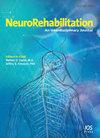长期意识障碍患者的并发症:叙述性综述
IF 1.7
4区 医学
Q3 CLINICAL NEUROLOGY
引用次数: 0
摘要
背景:少数研究专门探讨了严重后天性创伤性或非创伤性脑损伤和长时间意识障碍(pDoC,即植物状态/无反应清醒综合征(VS/UWS)或微意识状态(MCS)患者的并发症(MCs)。目的:概述PDoC患者的MC发病率。方法:综述对pDoC患者影响最大的MCs,包括与脑损伤直接相关的MCs(癫痫、神经外科并发症、痉挛、阵发性交感神经活动亢进、PSH),以及与严重残疾和长期静止不动相关的MCs(呼吸系统合并症、内分泌紊乱和代谢异常、异位骨化)。结果:患有 pDoC 的患者极有可能患上至少一种 MC。中度或重度呼吸系统和肌肉骨骼并发症是最常见的 MC。癫痫和 PSH 似乎在 VS/UWS 患者中比在 MCS 患者中更为常见,这可能是因为 VS 患者的脑损伤更为严重。内分泌代谢、PSH 和呼吸系统并发症在创伤性病因中发生率较低,而神经源性异位骨化在创伤性病因中发生率较高。VS/UWS和MCS之间以及三种病因之间的痉挛没有明显差异。MCs与较高的死亡率、较差的临床改善有关,并会影响临床诊断的准确性。结论:多种 MCs 的频繁发生需要专业的康复环境和高水平的多学科医疗专家来预防、适当识别和治疗。全面的康复治疗可避免可能发展为更严重的并发症,从而对临床疗效产生负面影响。本文章由计算机程序翻译,如有差异,请以英文原文为准。
Medical comorbidities in patients with prolonged disorder of consciousness: A narrative review
BACKGROUND:
A few studies specifically addressed medical comorbidities (MCs) in patients with severe acquired traumatic or non-traumatic brain injury and prolonged disorders of consciousness (pDoC; i.e., patients in vegetative state/unresponsive wakefulness syndrome, VS/UWS, or in minimally conscious state, MCS). OBJECTIVE:
To provide an overview on incidence of MCs in patients with pDoC. METHODS:
Narrative review on most impacting MCs in patients with pDoC, both those directly related to brain damage (epilepsy, neurosurgical complications, spasticity, paroxysmal sympathetic hyperactivity, PSH), and those related to severe disability and prolonged immobility (respiratory comorbidities, endocrine disorders and metabolic abnormalities, heterotopic ossifications). RESULTS:
Patients with pDoC are at high risk to develop at least one MC. Moderate or severe respiratory and musculoskeletal comorbidities are the most common MCs. Epilepsy and PSH seem to be more frequent in patients in VS/UWS compared to patients in MCS, likely because of higher severity in the brain damage in VS. Endocrine metabolic, PSH and respiratory complications are less frequent in traumatic etiology, whereas neurogenic heterotopic ossifications are more frequent in traumatic etiology. Spasticity did not significantly differ between VS/UWS and MCS and in the three etiologies. MCs are associated with higher mortality rates, worse clinical improvement and can impact accuracy in the clinical diagnosis. CONCLUSIONS:
The frequent occurrence of several MCs requires a specialized rehabilitative setting with high level of multidisciplinary medical expertise to prevent, appropriately recognize and treat them. Comprehensive rehabilitation could avoid possible progression to more serious complications that can negatively impact clinical outcomes.
求助全文
通过发布文献求助,成功后即可免费获取论文全文。
去求助
来源期刊

NeuroRehabilitation
CLINICAL NEUROLOGY-REHABILITATION
CiteScore
3.20
自引率
0.00%
发文量
178
审稿时长
6-12 weeks
期刊介绍:
NeuroRehabilitation, an international, interdisciplinary, peer-reviewed journal, publishes manuscripts focused on scientifically based, practical information relevant to all aspects of neurologic rehabilitation. We publish unsolicited papers detailing original work/research that covers the full life span and range of neurological disabilities including stroke, spinal cord injury, traumatic brain injury, neuromuscular disease and other neurological disorders.
We also publish thematically organized issues that focus on specific clinical disorders, types of therapy and age groups. Proposals for thematic issues and suggestions for issue editors are welcomed.
 求助内容:
求助内容: 应助结果提醒方式:
应助结果提醒方式:


